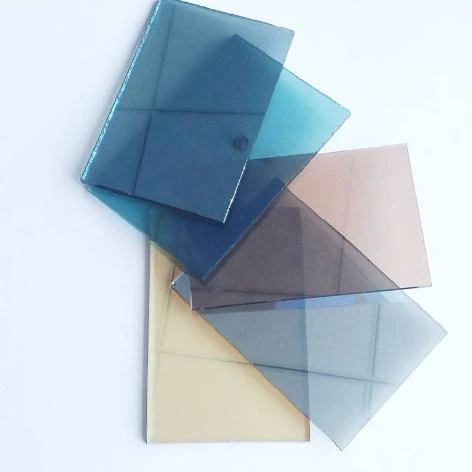The Future of Architectural Glass Factories
The architectural glass industry has evolved significantly over the past few decades, driven by the demand for innovative building materials that enhance aesthetics, energy efficiency, and sustainability. Architectural glass factories play a pivotal role in this transformation, supplying designers and architects with the products they need to create stunning structures that harmonize with their environments. This article explores the state-of-the-art practices in architectural glass manufacturing, its importance in modern architecture, and future trends shaping the industry.
The Evolution of Architectural Glass
Historically, glass was primarily used for windows, but advancements in technology have expanded its applications dramatically. Today, architectural glass includes everything from structural glazing and facades to decorative elements and insulating units. The ability to manipulate glass properties—such as transparency, color, and thermal performance—has transformed it into a key component of modern architecture.
Architectural glass manufacturers are continually exploring new technologies and materials to meet the growing demands of the market. The introduction of laminated, tempered, and low-emissivity glass has improved not only the safety and durability of glass but also its energy efficiency. For example, low-emissivity coatings help reduce heat transfer, thereby lowering energy costs and contributing to the sustainability of buildings.
The Role of Technology in Manufacturing
Modern architectural glass factories leverage cutting-edge technologies to enhance product quality and efficiency. Automation and robotics have streamlined production processes, allowing for precise cutting, shaping, and finishing of glass products. Computer numerical control (CNC) machines enable the manufacture of complex glass shapes that can cater to custom architectural designs.
Moreover, advancements in smart glass technology are revolutionizing the industry. Smart glass can change its properties based on external conditions, such as light and temperature. This functionality, achieved through electrochromic, thermochromic, or photochromic technologies, allows for dynamic energy management within buildings. As sustainability continues to gain importance, smart glass will become an integral part of architectural design, providing not just aesthetic value but also significant energy-saving potential.
Sustainability in Glass Production
architectural glass factory
Sustainability is a pressing concern for many industries, and architectural glass manufacturing is no exception. Factories are increasingly adopting eco-friendly practices to minimize their environmental footprint. This includes utilizing recycled materials in glass production, reducing waste, and optimizing energy consumption during manufacturing processes.
Additionally, Architectural glass has a substantial role in building sustainability certifications, such as LEED (Leadership in Energy and Environmental Design). Glass products that provide superior thermal performance and utilize renewable energy resources contribute to the overall sustainability of a building. Architects are now more inclined to specify glass materials that enhance energy efficiency and contribute to a building’s green status.
Future Trends in Architectural Glass
Looking ahead, the architectural glass industry is poised for further innovation. Advances in nanotechnology are enabling the development of self-cleaning and energy-generating glass. These products can significantly reduce maintenance costs and enhance the energy efficiency of buildings.
Furthermore, integrated technologies such as photovoltaic glass, which can generate electricity while serving as a building facade, are gaining traction. This technology promises to blend aesthetics with functionality, creating structures that not only look beautiful but also produce their own energy.
As urbanization continues to rise globally, there will be a pressing need for flexible and adaptable architectural solutions. Glass will undoubtedly play a crucial role in meeting these demands, enabling designs that are both visually appealing and functional.
Conclusion
Architectural glass factories are at the forefront of a rapidly changing industry, characterized by innovation, sustainability, and technological advancement. As architects and designers seek ever more creative ways to integrate glass into their projects, the factories producing these materials must continue to evolve and adapt. By embracing new technologies and sustainable practices, the architectural glass industry will be well-positioned to support the future of modern architecture, creating striking spaces that inspire while respecting our planet's resources.
 Afrikaans
Afrikaans  Albanian
Albanian  Amharic
Amharic  Arabic
Arabic  Armenian
Armenian  Azerbaijani
Azerbaijani  Basque
Basque  Belarusian
Belarusian  Bengali
Bengali  Bosnian
Bosnian  Bulgarian
Bulgarian  Catalan
Catalan  Cebuano
Cebuano  Corsican
Corsican  Croatian
Croatian  Czech
Czech  Danish
Danish  Dutch
Dutch  English
English  Esperanto
Esperanto  Estonian
Estonian  Finnish
Finnish  French
French  Frisian
Frisian  Galician
Galician  Georgian
Georgian  German
German  Greek
Greek  Gujarati
Gujarati  Haitian Creole
Haitian Creole  hausa
hausa  hawaiian
hawaiian  Hebrew
Hebrew  Hindi
Hindi  Miao
Miao  Hungarian
Hungarian  Icelandic
Icelandic  igbo
igbo  Indonesian
Indonesian  irish
irish  Italian
Italian  Japanese
Japanese  Javanese
Javanese  Kannada
Kannada  kazakh
kazakh  Khmer
Khmer  Rwandese
Rwandese  Korean
Korean  Kurdish
Kurdish  Kyrgyz
Kyrgyz  Lao
Lao  Latin
Latin  Latvian
Latvian  Lithuanian
Lithuanian  Luxembourgish
Luxembourgish  Macedonian
Macedonian  Malgashi
Malgashi  Malay
Malay  Malayalam
Malayalam  Maltese
Maltese  Maori
Maori  Marathi
Marathi  Mongolian
Mongolian  Myanmar
Myanmar  Nepali
Nepali  Norwegian
Norwegian  Norwegian
Norwegian  Occitan
Occitan  Pashto
Pashto  Persian
Persian  Polish
Polish  Portuguese
Portuguese  Punjabi
Punjabi  Romanian
Romanian  Russian
Russian  Samoan
Samoan  Scottish Gaelic
Scottish Gaelic  Serbian
Serbian  Sesotho
Sesotho  Shona
Shona  Sindhi
Sindhi  Sinhala
Sinhala  Slovak
Slovak  Slovenian
Slovenian  Somali
Somali  Spanish
Spanish  Sundanese
Sundanese  Swahili
Swahili  Swedish
Swedish  Tagalog
Tagalog  Tajik
Tajik  Tamil
Tamil  Tatar
Tatar  Telugu
Telugu  Thai
Thai  Turkish
Turkish  Turkmen
Turkmen  Ukrainian
Ukrainian  Urdu
Urdu  Uighur
Uighur  Uzbek
Uzbek  Vietnamese
Vietnamese  Welsh
Welsh  Bantu
Bantu  Yiddish
Yiddish  Yoruba
Yoruba  Zulu
Zulu 

